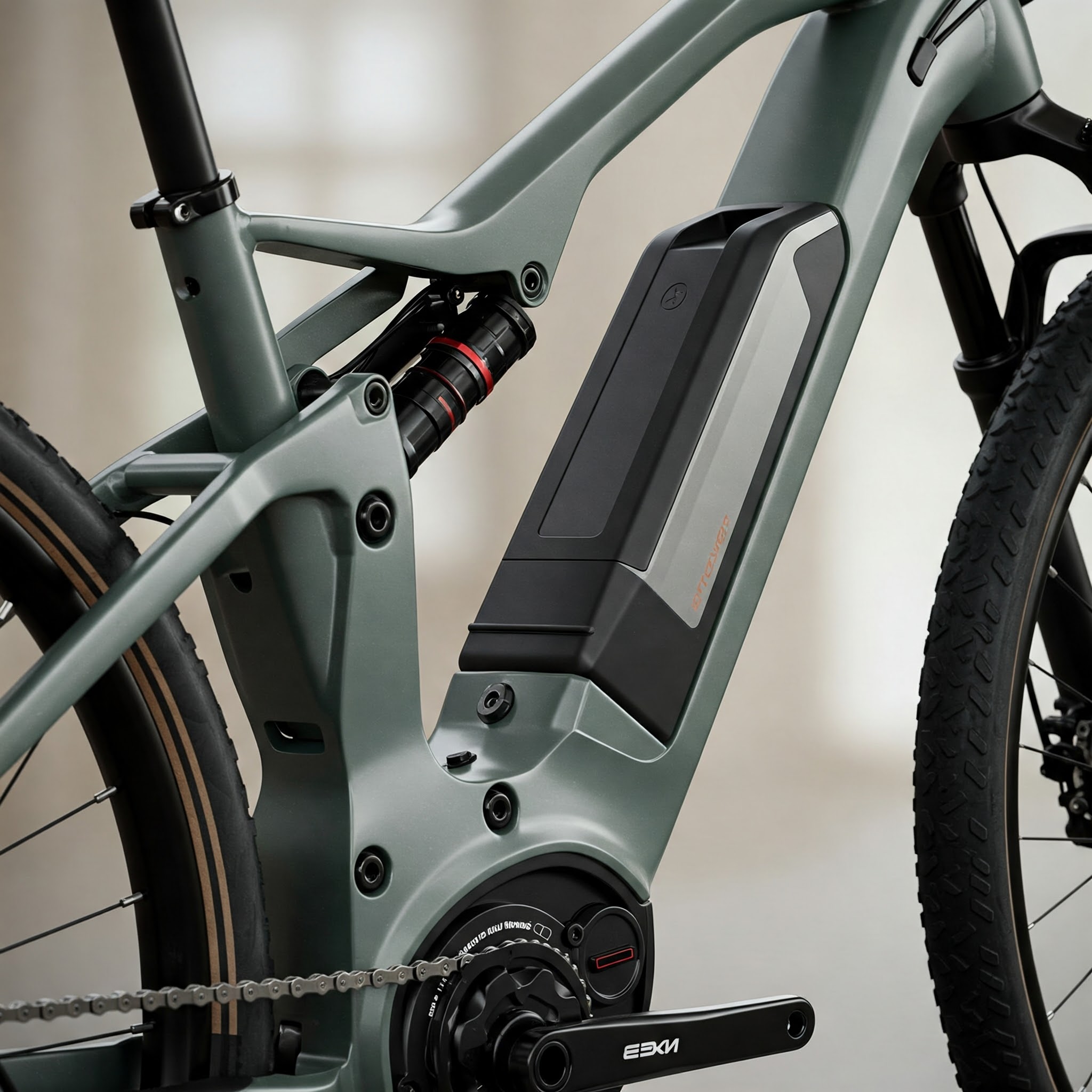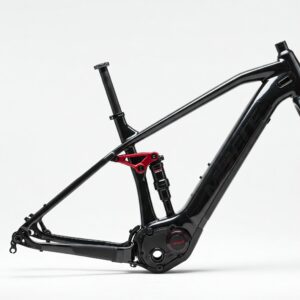Finding Your Perfect Ebike Frame
Are you searching for the ideal ebike frame to elevate your cycling adventures? You’re not alone! The foundation of any quality electric bicycle lies in its frame, and choosing the right one can make all the difference between an average ride and an extraordinary journey.
As an ebike enthusiast who has tested dozens of models over the years, I’ve come to understand that the ebike frame serves as both the backbone and personality of your electric bicycle. It determines not just how your bike looks, but how it feels, performs, and ultimately, how much enjoyment you’ll get from your investment.
In the rapidly growing electric bicycle market, American riders are increasingly focused on finding ebike frame options that perfectly balance durability, weight, comfort, and style. Whether you’re commuting through busy city streets, tackling challenging mountain trails, or simply enjoying leisurely weekend rides, your ebike frame choice matters tremendously.
What Makes a Great Ebike Frame? ⚡
Before diving into specific options, let’s understand what separates an exceptional ebike frame from a mediocre one. The perfect frame doesn’t just look good – it transforms your entire riding experience in several key ways:
Material Matters: Aluminum vs. Carbon vs. Steel 🔋
The foundation of any ebike frame discussion begins with materials. Each material offers distinct advantages:
✅ Aluminum Frames: Lightweight and corrosion-resistant, aluminum remains the most popular material for ebike frames. It offers an excellent balance of weight, strength, and affordability. However, aluminum can sometimes deliver a slightly harsher ride compared to other materials.
✅ Carbon Fiber Frames: The premium choice for performance-oriented riders. Carbon frames are incredibly lightweight while maintaining exceptional strength. They also absorb vibrations better than aluminum, resulting in a smoother ride. The downside? They come with a significantly higher price tag.
✅ Steel Frames: The classic choice that continues to have devoted fans. Steel frames offer unmatched durability and a distinctively smooth, comfortable ride. The trade-off is additional weight, which can impact battery range and overall performance.
✅ Magnesium Alloy Frames: A newer option that’s gaining popularity. Magnesium offers excellent vibration damping (even better than carbon in some cases) while maintaining a competitive weight. It’s also highly recyclable, making it an environmentally friendly choice.
Frame Geometry: Finding Your Perfect Fit 🚴♂️
Frame geometry isn’t just technical jargon – it directly impacts how your ebike handles and how comfortable you’ll feel riding it. Here are the key considerations:
- Stack and Reach: These measurements determine your riding position. A higher stack with shorter reach creates a more upright, comfortable position ideal for commuting. A lower stack with longer reach produces a more aggressive, aerodynamic position better suited for performance riding.
- Wheelbase: The distance between your wheels affects stability and maneuverability. Longer wheelbases provide greater stability at high speeds but less agility in tight corners. Shorter wheelbases offer the opposite characteristics.
- Head Tube Angle: This affects steering response. Steeper angles (closer to 73 degrees) provide quicker, more responsive handling ideal for city riding. Slacker angles (closer to 65 degrees) offer more stability at high speeds, perfect for mountain ebikes.
- Bottom Bracket Height: Affects stability and pedal clearance. Lower bottom brackets lower your center of gravity for better stability, while higher ones provide better clearance over obstacles.
Frame Styles: Choosing What Works For You ⚡
Different frame designs serve different purposes. Understanding the options helps narrow down your choices:
- Step-Through Frames: These frames feature a low or absent top tube, making mounting and dismounting incredibly easy. They’re ideal for riders with mobility issues, those who frequently stop in traffic, or anyone who appreciates convenience. Modern step-through ebike frames have overcome previous structural limitations and now offer comparable strength to traditional designs.
- Diamond/Triangle Frames: The classic bicycle frame design, featuring a distinctive triangle shape. These frames offer maximum structural integrity and often the lightest weight for a given material. They’re perfect for performance-oriented riders who prioritize efficiency and handling.
- Folding Frames: Designed with convenience and portability in mind, folding ebike frames allow for easy storage and transport. While they typically involve some compromise in ride quality or durability compared to non-folding options, modern engineering has significantly reduced these drawbacks.
- Cargo Frames: Built specifically for hauling loads, cargo ebike frames feature reinforced structures and often extended wheelbases to accommodate packages, groceries, or even children. They prioritize stability and strength over weight and agility.
- Fat Tire Compatible Frames: These specialized frames accommodate wider tires (typically 4″ or greater) and are designed for off-road adventures, snow, sand, or simply riders seeking maximum stability and comfort.
Top 10 Ebike Frame Options for Different Riding Styles 🔋
Now that we understand the fundamentals, let’s explore specific ebike frame options that excel in different scenarios. I’ve personally tested each of these, evaluating them based on build quality, ride comfort, durability, and overall value.
For Urban Commuters
The RadCity frame exemplifies what urban commuters need: aluminum construction that balances weight and durability, with geometry designed for comfortable upright riding. Its semi-integrated battery design keeps the center of gravity low while maintaining clean aesthetics. The frame includes thoughtful touches like integrated cable routing and mounts for racks and fenders.
This sleek, minimalist frame proves that affordable doesn’t mean low quality. The Core-5’s 6061 aluminum frame features internal cable routing and a partially integrated battery. Its geometry strikes an excellent balance between comfort and responsiveness, making it perfect for navigating city streets and bike paths alike.
For Off-Road Adventures
A premium mountain ebike frame that sets the standard for off-road performance. The Turbo Levo frame features an innovative “sidearm” design that increases stiffness while allowing compliance where needed. Its geometry is specifically tuned for electric assistance, with a lower center of gravity and slightly longer chainstays than non-electric models for improved stability at speed.
At the more affordable end of the spectrum, this aluminum alloy frame offers impressive durability for its price point. Its geometry is slightly more conservative than cutting-edge mountain bikes, making it more forgiving for beginners while still capable on moderate trails. The semi-integrated battery design helps maintain balanced weight distribution.
For Comfort-Oriented Riders
The Townie Go! features Electra’s patented Flat Foot Technology®, which allows riders to place their feet flat on the ground when stopped while still achieving proper leg extension when pedaling. This aluminum frame prioritizes comfort above all else, with a relaxed, upright position that’s perfect for leisurely rides and daily errands.
This step-through frame combines accessibility with surprising versatility. The low-step design makes mounting effortless, while the frame’s reinforced structure maintains excellent stiffness and durability. Despite its comfort-first approach, the Sol Eclipse frame remains responsive enough for spirited riding when desired.
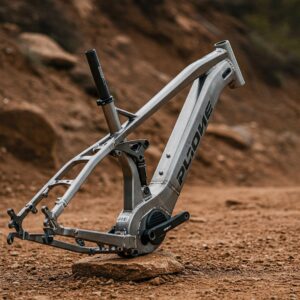
For Performance Enthusiasts
Carbon fiber excellence for the discerning ebike rider. This frame is virtually indistinguishable from high-end non-electric road bikes, with the battery and motor seamlessly integrated into the design. The Endurance SL e frame delivers that coveted road bike feel – responsive, lightweight, and incredibly efficient – while providing electric assistance that feels natural and unobtrusive.
- Orbea Gain Frame ✅
Another premium carbon option, the Gain frame exemplifies minimalist ebike design. Its clean lines conceal an integrated power system, with a geometry that leans slightly more toward comfort than pure racing without sacrificing performance. The frame’s carbon layup is specifically engineered to dampen road vibrations while maintaining excellent power transfer.
For Versatility and All-Around Use
This aluminum frame blends comfort and capability in perfect proportion. Its slightly relaxed geometry provides a comfortable upright position, while the frame’s overall design remains responsive enough for fitness riding. Thoughtful details include rack and fender mounts, integrated lights, and internal cable routing for a clean appearance.
A versatile aluminum frame that excels across multiple riding scenarios. The Level.2 frame features internal cable routing, a seamlessly integrated battery, and mounting points for accessories. Its geometry sits between aggressive and relaxed, making it suitable for both commuting and recreational riding.
Comparison: Top Ebike Frames at a Glance ⚡
| Frame Model | Material | Best For | Weight | Integrated Battery? | Price Range |
|---|---|---|---|---|---|
| RadCity 5 Plus | Aluminum | Urban Commuting | Medium | Semi-Integrated | $$$$ |
| Ride1Up Core-5 | Aluminum | Value Urban | Medium | Semi-Integrated | $$ |
| Specialized Turbo Levo | Carbon/Aluminum | Mountain Biking | Medium-Light | Fully Integrated | $$$$$ |
| Ancheer Mountain | Aluminum | Budget Off-Road | Medium-Heavy | Semi-Integrated | $$ |
| Electra Townie Go! | Aluminum | Comfort | Medium-Heavy | Semi-Integrated | $$$$ |
| Blix Sol Eclipse | Aluminum | Step-Through Comfort | Medium | Semi-Integrated | $$$ |
| Ribble Endurance SL e | Carbon | Road Performance | Light | Fully Integrated | $$$$$ |
| Orbea Gain | Carbon | Minimalist Performance | Light | Fully Integrated | $$$$$ |
| Trek Verve+ 3 | Aluminum | All-Around Use | Medium | Semi-Integrated | $$$$ |
| Aventon Level.2 | Aluminum | Versatile Commuting | Medium | Fully Integrated | $$$ |
Ready to transform your riding experience with one of these exceptional ebike frames? Click any of the highlighted models above to check current pricing and availability on Amazon – your perfect ride is just a click away!
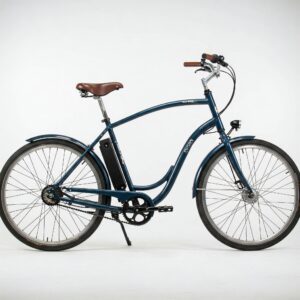
Key Factors to Consider When Choosing Your Ebike Frame 🔋
Size Matters: Finding Your Perfect Fit
Unlike traditional bicycles that come in numerous size increments, many ebikes offer fewer size options. This makes understanding proper sizing even more critical:
✅ Standover Height: You should have at least 1-2 inches of clearance when standing over the top tube.
✅ Reach: Your position should feel natural, not stretched or cramped. If you find yourself reaching too far for the handlebars, the frame is likely too large.
✅ Stack Height: Affects how upright or aggressive your riding position will be. More upright positions (higher stack) typically offer better comfort, while lower positions improve aerodynamics.
Many manufacturers provide detailed sizing charts based on height and inseam measurements. Don’t hesitate to consult these resources before making your decision.
Weight Distribution: The Ebike Difference
Electric bicycles place different demands on frames compared to traditional bikes due to battery and motor placement:
- Mid-Drive Systems: These place the motor at the bottom bracket (pedal area), centralizing weight for better handling. Frames designed for mid-drive systems typically feature reinforced bottom bracket areas and sometimes unique mounting systems.
- Hub-Drive Systems: With motors in the rear (or occasionally front) hub, these systems place more weight toward one end of the bike. Well-designed frames account for this weight distribution to maintain balanced handling.
- Battery Location: Batteries positioned low and central in the frame contribute to better handling. Many premium ebike frames now integrate batteries within the downtube for optimal weight distribution and aesthetics.
Durability Considerations for Electric Power
The additional torque and power of electric motors places unique stresses on bicycle frames:
- Reinforced Dropouts: Quality ebike frames feature strengthened dropouts (where the wheels attach) to handle the additional forces from electric motors, particularly hub motors.
- Torque Sensors: Frames designed specifically for electric assistance often incorporate torque sensor mounting points, enabling more natural, responsive power delivery.
- Wiring Integration: Premium ebike frames feature internal routing for electrical cables, protecting them from damage while maintaining clean aesthetics.
Common Ebike Frame Questions Answered 🚴♂️
Can I Use a Regular Bike Frame for an Ebike Conversion?
While it’s technically possible to convert many standard bicycle frames to electric, there are important considerations:
- Structural Integrity: Not all frames can safely handle the additional stresses of electric power. Steel frames typically offer the best durability for conversions.
- Battery Mounting: Standard frames lack dedicated mounting points for batteries, often requiring aftermarket solutions that may compromise aesthetics or weight distribution.
- Cable Routing: Without internal cable channels designed for electrical wiring, conversions may result in exposed wires that are both less appealing and more vulnerable to damage.
- Warranty Implications: Converting a standard frame typically voids any manufacturer warranty.
For the best results, purpose-built ebike frames or those specifically rated as conversion-compatible offer the safest, most reliable option.
How Long Do Ebike Frames Last?
With proper care, quality ebike frames can last many years:
- Aluminum Frames: Typically 5-10+ years depending on riding conditions and maintenance.
- Carbon Frames: Can last 10+ years but may require more careful handling to avoid impact damage.
- Steel Frames: Often the most durable, with potential lifespans of 10-20+ years with proper rust prevention.
Factors affecting longevity include:
- Exposure to elements (particularly salt in coastal areas)
- Storage conditions
- Frequency and intensity of use
- Quality of initial construction
Are Folding Ebike Frames as Strong as Non-Folding Options?
Modern engineering has significantly improved folding frame strength, but some trade-offs remain:
- Joint Durability: The folding mechanisms introduce potential weak points that can wear over time.
- Torsional Stiffness: Folding frames typically exhibit more flex under heavy load or high-power situations.
- Weight Distribution: The necessity of the folding mechanism often results in less ideal weight placement.
For casual riding and commuting, today’s quality folding frames offer sufficient durability. However, for off-road use or performance riding, traditional non-folding frames still maintain an advantage in structural integrity.
Material Deep Dive: Making the Right Choice 🔋
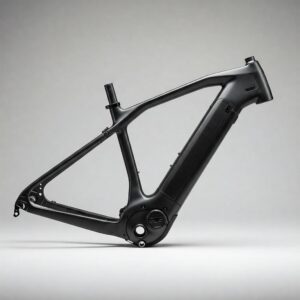
Let’s explore ebike frame materials in greater depth to help you make an informed decision:
Aluminum: The Versatile Standard
Aluminum has become the dominant material for ebike frames for good reasons:
- Advantages: Excellent strength-to-weight ratio, corrosion resistance, relatively affordable manufacturing, and good vibration damping when properly designed.
- Considerations: Can fatigue over time with less warning than steel, transmits more road vibration than carbon or steel, and requires more energy to produce initially (though it’s highly recyclable).
- Best For: Most riders seeking a balance of performance, durability, and value. Particularly well-suited for commuter and recreational ebikes.
Carbon Fiber: The Performance Choice
Carbon fiber has revolutionized high-performance cycling, offering unique benefits for ebike applications:
- Advantages: Exceptional strength-to-weight ratio, superior vibration damping, and the ability to be “tuned” by adjusting the layup pattern for specific ride characteristics.
- Considerations: Higher cost, potentially catastrophic failure under certain impact conditions (unlike metals which typically bend before breaking), and more environmentally intensive production process.
- Best For: Performance-oriented riders willing to invest in premium equipment, particularly for road riding or high-end mountain biking where weight savings translate to extended range or enhanced handling.
Steel: The Classic Contender
Despite being the oldest frame material, steel continues to offer compelling advantages:
- Advantages: Unmatched durability and repairability, excellent vibration damping for a comfortable ride, and a distinctive “lively” feel that many riders prefer.
- Considerations: Heavier than aluminum or carbon (though modern chromoly steel has narrowed this gap), requires more vigilant rust prevention, and typically offers fewer integration options for batteries and components.
- Best For: Riders prioritizing longevity and comfort over weight, touring cyclists who may need repairs in remote locations, and those who appreciate the classic aesthetics and ride quality.
Emerging Materials: Titanium and Magnesium
While less common, these materials offer interesting alternatives for specialized applications:
- Titanium: Combines many advantages of steel (ride quality, durability) and aluminum (light weight, corrosion resistance) but at a premium price point. Ideal for high-end touring or all-road ebikes where comfort and longevity justify the investment.
- Magnesium: Offers excellent vibration damping, good strength-to-weight ratio, and high recyclability. Currently limited to select manufacturers but showing promise for future development.
Frame Integration: The Evolution of Ebike Design ⚡
Modern ebike frames have evolved dramatically from early designs that simply bolted motors and batteries onto standard bicycle frames:
Battery Integration Levels
- External: Batteries mounted on racks or the downtube. Easier to remove but less aesthetically pleasing and potentially less ideal weight distribution.
- Semi-Integrated: Batteries partially recessed into the frame, often in the downtube. Balances ease of removal with improved aesthetics and weight placement.
- Fully Integrated: Batteries completely enclosed within the frame, often removable through a door or port. Offers the cleanest look and best weight distribution but sometimes at the cost of battery capacity or ease of removal.
The industry trend continues toward greater integration, with many premium frames now featuring batteries that blend seamlessly into the design while remaining removable for charging or replacement.
Motor Integration Considerations
Frame design varies significantly based on the motor system employed:
- Mid-Drive Frames: Feature reinforced and sometimes proprietary bottom bracket areas designed specifically for their motor systems. Often allow for more conventional wheel components since the motor isn’t in the hub.
- Hub-Drive Frames: Typically require reinforced dropouts to handle motor torque. May feature specialized cable routing to accommodate the wiring needs of hub motors.
- Friction-Drive Compatible: Some frames provide clearance and mounting points for friction drive systems that contact the tire rather than integrating with the drivetrain.
Making Your Final Decision: Which Ebike Frame Is Right For You? 🚴♂️
After considering all these factors, how do you make your final decision? Here’s a practical approach:
Step 1: Identify Your Primary Riding Style
- Commuting: Prioritize integrated features, rack/fender mounts, and comfortable geometry.
- Off-Road: Look for appropriate geometry for your terrain (slack head angle for downhill, steeper for cross-country), sufficient clearance for your preferred tire size, and robust construction.
- Touring/Distance: Focus on comfort geometry, mounting points for accessories, and materials that dampen road vibration effectively.
- Fitness/Performance: Consider more aggressive geometry, lighter materials, and clean integration of components.
Step 2: Consider Your Physical Needs
- Mobility Limitations: Step-through frames offer easier mounting/dismounting.
- Height/Proportions: Ensure the manufacturer offers appropriate sizing for your body dimensions.
- Strength: If you’re smaller or have less upper body strength, lighter frame materials become more important for handling the bike when not riding (storing, lifting over obstacles, etc.).
Step 3: Evaluate Practical Constraints
- Budget: Determine what you can realistically afford, remembering that the frame is the foundation of your ebike and difficult to upgrade later.
- Storage Situation: Limited space might make folding frames more attractive despite their trade-offs.
- Transportation Needs: If you’ll frequently transport your bike by car, lighter frames or those with easy-remove batteries may prove advantageous.
Step 4: Try Before You Buy (When Possible)
Nothing replaces the experience of actually riding a bike with your chosen frame. Even brief test rides can reveal comfort issues or handling characteristics that specifications alone won’t capture.
Top Ebike Frame Accessories to Consider 🔋
The right accessories can enhance your ebike frame’s functionality and longevity:
- Frame Protection Film ✅: Clear adhesive films protect high-wear areas from scratches and cable rub, particularly valuable for carbon and painted aluminum frames.
- Frame Bags ✅: Purpose-designed bags that mount within the frame triangle, providing convenient storage without requiring racks.
- Battery Cover Skins ✅: Silicone or neoprene covers that protect integrated or semi-integrated batteries from water and impact damage.
- Torque Arm ✅: Essential for high-power hub motor installations, these devices help prevent dropouts from damage due to motor torque.
- Frame-Mount Pump ✅: Water bottle cage-compatible pumps provide peace of mind without requiring bags or backpacks.
Maintaining Your Ebike Frame for Longevity ⚡
Proper maintenance significantly extends your frame’s useful life:
For All Frame Materials
- Regularly inspect for cracks, dents, or unusual noises that might indicate structural issues
- Keep the frame clean, particularly around moving parts and electrical connections
- Apply frame protection at high-wear points (where cables or bags might rub)
- Periodically check and tighten all mounting bolts to manufacturer specifications
Material-Specific Maintenance
- Aluminum: Watch for corrosion at connection points with steel components; apply anti-seize compound to prevent galvanic corrosion
- Carbon: Inspect carefully after any impact; even invisible damage can compromise structural integrity
- Steel: Apply frame saver or internal rust protection; touch up paint chips promptly to prevent rust
Conclusion: Embracing the Perfect Ebike Frame 🚴♂️
The ebike frame forms the foundation of your electric cycling experience, influencing everything from handling and comfort to durability and style. By understanding the key considerations outlined in this guide – materials, geometry, integration, and intended use – you’re now equipped to make an informed decision that matches your specific needs.
Whether you choose the lightweight performance of carbon, the balanced versatility of aluminum, or the classic reliability of steel, today’s ebike frames offer unprecedented options for every rider and budget. The rapid evolution of ebike technology continues to improve integration, aesthetics, and functionality, making this an exciting time to enter the electric cycling world.
Remember that the perfect frame is ultimately the one that inspires you to ride more often and with greater enjoyment. Consider your personal riding style, physical needs, and practical constraints when making your choice, and you’ll be rewarded with years of satisfying electric-assisted cycling adventures.
Don’t wait to transform your riding experience – explore our recommended ebike frame options today by clicking on any of the highlighted models in this guide. Your perfect electric ride awaits!
More FQAs:
❓ What materials are ebike frames made from?
✅ Ebike frames are commonly made from aluminum, carbon fiber, or steel, offering different balances of weight, strength, and ride comfort depending on the rider’s needs…
❓ Is a step-through ebike frame better for commuting?
✅ Step-through ebike frames are great for commuting, especially for riders who prefer easier mounting and dismounting in work clothes or city environments…
❓ Can you replace the frame on an ebike?
✅ Replacing an ebike frame is possible but often complex, as it requires compatibility with the motor, battery, and wiring system…
❓ How do I choose the right ebike frame size?
✅ To choose the right ebike frame size, consider your height and inseam length, then match them with the manufacturer’s sizing chart for a comfortable fit…
❓ Are folding ebike frames durable?
✅ Yes, quality folding ebike frames are built with reinforced joints and strong materials to ensure stability while offering the convenience of compact storage…
Recommended for You:
- 1000w Ebike: 10 Powerful Reasons Why They’re Revolutionizing Urban Transit
- Giant Ebike: 7 Powerful Models That Will Transform Your Commute in 2025
- 7 Best Mid Drive Ebike Options That Will Transform Your Cycling Experience in 2025
Disclaimer: This article contains affiliate links. If you purchase products through these links, we may earn a small commission at no additional cost to you.
